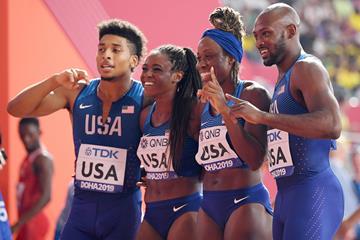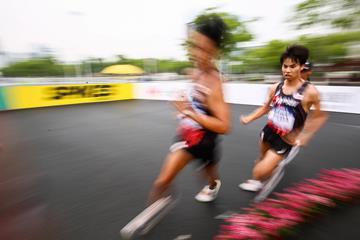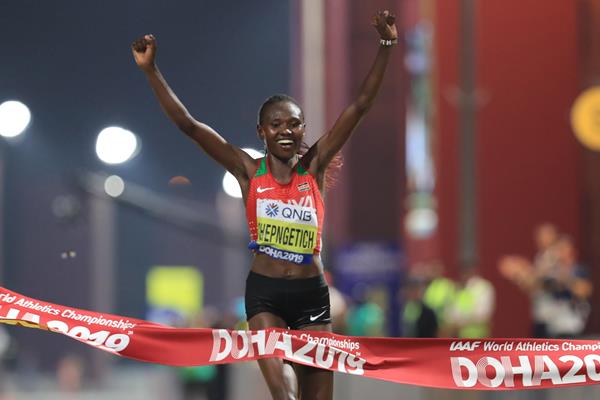One of the world’s foremost road race medical coordinators, Chris Troyanos, has endorsed the medical preparation for last night’s women’s marathon at the World Championships in Doha, saying that the approach to runner safety and rapid response to all locations along the course matched the challenging weather conditions.
Troyano, executive director of the International Institute for Race Medicine, said he was “comfortable and confident” about the measures in place to protect elite athletes competing in these hot and humid conditions.
“Every endurance event around the world needs to understand climate change and what we are facing in terms of extremes of temperature in various locations,’’ he said. “Medical planning and coordination needs to keep up with the demands of our industry (endurance events), especially as it relates to medical coverage and the safety of our athletes.
“When you look at last night’s heat and humidity, were conditions difficult? Yes. Of course, but the IAAF planned for that concern. Working with the local organising committee, Doha medical leadership and their public safety partners they did a tremendous job of the planning for this event and the medical coverage.”
Troyanos, a certified athletic trainer (ATC), is one of several leading experts in the field that was consulted to ensure the endurance races were conducted safely in Doha. “I have been involved in discussions for the last few months on how this event was going to be covered. IAAF medical leadership, along with Dr Alonso (the event’s chief medical officer) and his team did a tremendous job,’’ he said
“The concerns of athletes dropping out and athletes getting some kind of heat illness was obviously paramount and we put a programme in place that was going to enable us to rapidly respond anywhere on the course. Just because medical coverage was highly visible did not mean we were overmatched with the amount of injuries. That was by design. No athlete was going to be left unattended for any length of time without medical support.
“If we did have any issues of exertion heat stroke, we had the capability to react immediately. What was interesting about last night was that we had zero cases, not one person was put in a cold water immersion baths”.
He said athlete acclimatisation and athletes taking personal responsibility was a significant contributor to this outcome. “Elite athletes are smarter, they know their bodies and limitations,’’ he said. “They were battling the weather and the course. Acclimatisation and listening to their bodies the key and all athletes should know that.
Asked if he believed the endurance races should go ahead in these weather conditions he said: “I’ve had this question asked of me many times. If you don’t have the assets, the medical staff and the support, not just from the organising committee and the IAAF but from the local public safety organizations, you can’t, and should not be hosting events in these conditions. When you look at the field size, the fact we were dealing with an elite athlete population, and our medical plan, I knew we would be able to handle the challenges of the weather conditions.
“Keep in mind, that if we had 30,000 runners, a decision to host the race would be a different story. Very few, if any large scale endurance events have that kind of capability. Future events in Tokyo (Olympics), events host in the Pacific Rim and around the world will be facing similar concerns. Finding ways to mitigate and improve athlete safety needs to be paramount. The (IIRM) International Institute for Race Medicine and others are positioned to offer that support.”
He remains confident that the rest of the road events scheduled over the next week can be managed without undue risk to the athletes.
“I felt very comfortable and confident that we were going to be fine (last night). The race had medical and EMS line of sight coverage the whole way. The rest of the week is going to be a challenge but I don’t feel any differently.”
IAAF







 Countdown
Countdown





